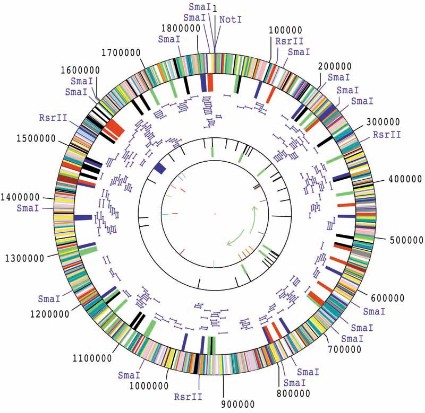The earliest access in bioinformatics was database methods at the start of the genomic revolution. This allowed the storing, accessing, and updating of data on sequences, for example, nucleotides or amino acids. This saw cultured interfaces being developed to researchers for information and the adding of new data in their search. Later, bioinformatics included the development of methods for helping researchers apply the data for a difference of purposes. Specific inventions have been developed to reveal the relationships between different members of a large set of data. For examples, it can be used to find the location of genes along a specific sequence.
 The turn of the millennium is featured by a new scientific revolution. This revolution was indicated by a large-scale DNA sequencing effort in July 1995, when 1.8 million base pairs of the genome of Haemophilus influenzae, a small Gram-negative bacterium, was published as the first of a free-living organism. Since then, the amount of DNA sequence data in usable databases has been growing up. It is now about to claim its biggest excitement: the complete 3.3 billion base-pair DNA sequence of the entire human genome. DNA sequences are valuable because they provide the most detailed. It is the blueprint of life with the complete set of instructions for how each working part should be assembled and function. Identifying the order of letters in our genetic alphabet is an important and basic first step. The complicated task is to tell what those letters mean, what they do, and what can be done if the messages spelled out are in error. Knowing the code for a gene does not mean that one knows the structure and function of the protein it produces. Basic information required understanding how the genetic code locked in our cells ends up constructing and keeping a fully functioning being.
|
In 1977, many genes from many different organisms have been solved. Databases allowed all of the information to be stored and accessed so that examination and determination can be used. This allowed similarities and differences between proteins and species to be analyzed. The amount of data being found in the molecular biology is so great that it is fortunate that computer power continues to increase very quickly. Still, with today’s computers there are still conditions on what can be done. The sequencing of large genomes can still take some time. During the Human Genome Project, the sequencing of the human genome took several days of processing time just to collect small DNA fragments of only around 700 nucleotides. The computer revolution moves on at a fast pace. Bioinformatics will continue its own revolution hand in hand with this. .
Bioinformatics has become an attempt to explain the increasing amount of DNA sequence data. The problems faced are basically statistical, due to the basic complication of biological systems and to our lack of a general theory of life's organization at the molecular level. The task is to cut patterns from large amounts of noisy data in the nonappearance of general theories, which is to learn the theory necessarily from the data through a process of inference, model fitting, and learning from examples.
|